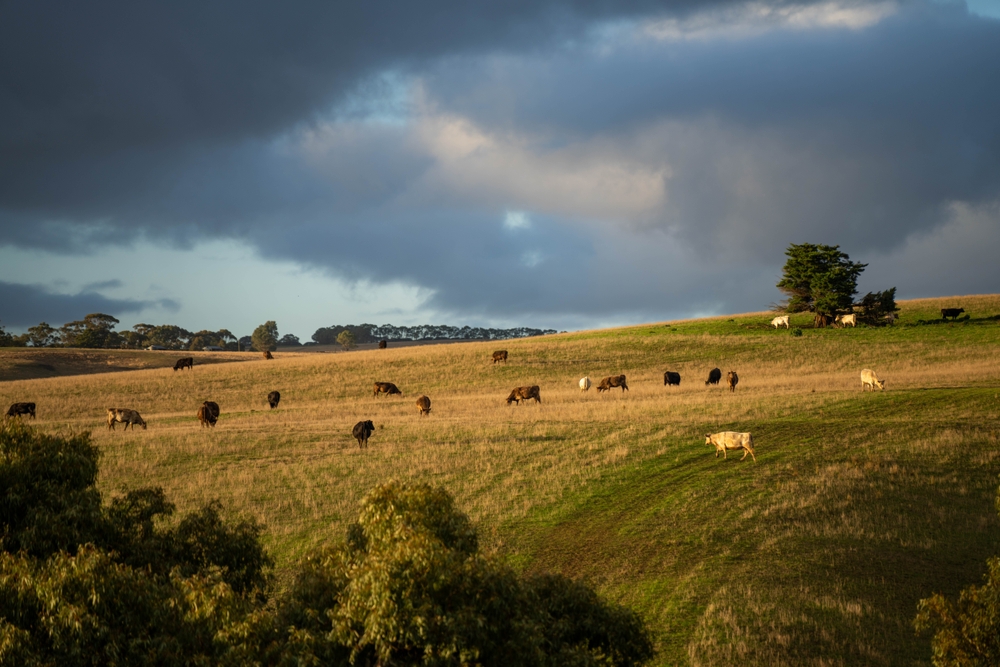
On today’s Cow-Calf Corner, Mike Trammell, Oklahoma State University Southeast Regional Forage Agronomist, talks about managing mixed forage pastures.
As pasture stands mature, especially monocultures, they tend to become a complex mixture of plants or polyculture of plants that have become adapted to a specific area and management style. These polycultures may contain a mixture of grasses and legumes. Some producers may look to re-establish these pastures and maintain a pure stand. Others may work to optimize the management of these mixtures to better fit their existing operation. Listed below are a few ways these mixed forage resources can be managed to better meet operational needs.
Liming – In a mixed pasture stands, adding lime to a soil with a low pH would tend to encourage any existing clover. If lime is not applied, acid-tolerant species tend to be present in greater quantities. Lime also makes other nutrients in the soil more available to the plant. If pastures need lime as indicated by a soil test, then lime should be the first thing applied.
Soil Fertility – Improved grasses and legumes need good soil fertility to persist and be productive. If soil fertility is low, it will favor species that are more efficient at extracting and using nutrients from the soil. Application rate and timing of nitrogen can also be used to shift the species composition of pastures. Nitrogen fertilization will tend to encourage grass growth, shifting the composition toward grasses and away from legumes. Early spring and late summer applications will encourage cool-season grass growth. In contrast, late spring and summer applications will shift the mixed pasture stands toward crabgrass and bermudagrass.
Grazing management and Forage Plant Growth – After grazing or cutting, plants need energy to regrow. In grasses this energy comes from two places. The first is the leaf area remaining after defoliation. The remaining leaf area is like a solar panel that captures sunlight and converts it into energy (sugars and carbohydrates) that the plant can use for regrowth. The more leaf area that is left, the larger the solar panel and the faster pastures will recover. The second place that energy comes from for regrowth is stored carbohydrates. The location of these stored energy reserves depends on the plant species. Grasses that store their energy in the stem base or crown are less tolerant to close and frequent grazing compared to grasses that store their energy in stolons and rhizomes that are safely below the grazing height of livestock. Resting pastures allows the leaf area to regrow and carbohydrate reserves to be restored.
Grazing Height – In mixed pasture stands, close grazing will tend to favor grass and legume species that have leaf area and energy stores close to the soil surface. Close grazing results in a shift toward low growing species such as bermudagrass, bluegrasses, and white clover. A higher grazing height would tend to shift the pasture mix back toward tall growing cool-season grass species such as tall fescue and orchardgrass.
Grazing Frequency – Some species are more tolerant of frequent grazing. These species tend to have leaf area close to the soil surface that is maintained even under close grazing such as bermudagrass and white clover. This means that grazing mixed pastures closely and frequently will tend to shift the botanical composition toward these species.
Timing of Grazing – Grazing a mixture that includes both cool- and warm-season species during the summer months will tend to shift the botanical composition toward the warm-season species, especially during and after droughts.
Using Improved Varieties – These varieties may offer considerable benefits in terms of improved yield, animal performance, and persistence.

















